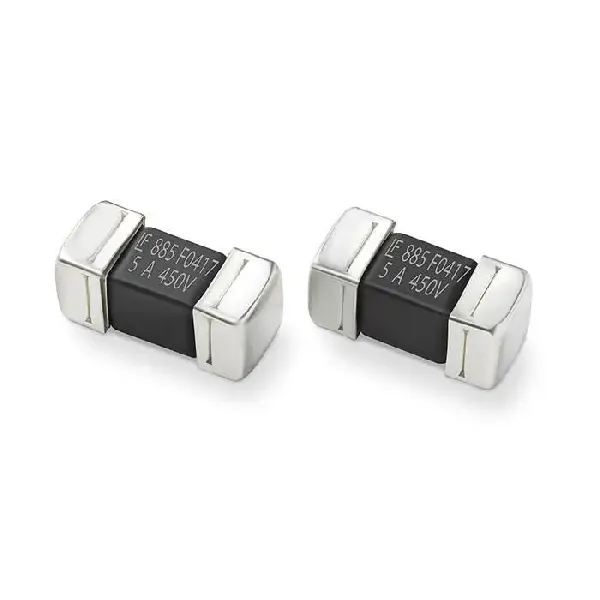AEC-Q200 E version adds fuses, Littelfuse and AEM launch new products to seize the opportunity of passive devices for vehicles
Automotive components need to undergo vehicle grade certification before being loaded onto the vehicle. But there are various components in cars, including main control chips, sensors, storage chips, communication chips, power devices, and so on. Therefore, the Association of Automotive Electronics (AEC) has developed the International Association of Automotive Electronics (AECQ) Vehicle Code Verification Standard, commonly known as the AECQ Vehicle Code Verification Standard. AECQ is divided into multiple sub standards, namely AEC-Q100, which is a standard for integrated circuits (ICs), and AEC-Q101, which is a standard for discrete semiconductors. AEC-Q102 is a standard for discrete optoelectronic semiconductors. AEC-Q104 is a standard for multi chip components. AEC-Q200 is a standard for passive devices.
In order to improve the reliability and performance of components in automotive applications, each sub standard is constantly updated and revised. For example, the AEC-Q200 version was updated to version E in March 2023. This version has added applicable categories from the original 14 categories to 16 categories, including niobium capacitors, fuses, supercapacitors, and micro resistors.
Fuses can be applied in battery management systems, DC/DC converters, information entertainment and navigation, as well as automotive electronics design and applications such as ADAS, radar, and electric vehicle charging stations, ensuring safety during use. Especially for battery management systems, taking a pure electric vehicle as an example, more than 200 fuses are required in the battery. As the range increases and the battery capacity increases, more fuses will be used.
Previously, before the official release of the AEC-Q200 E version standard, products from industry manufacturers mainly referred to industrial grade standards. With the update of AEC-Q200, industry component manufacturers are actively promoting the validation of their own products. Currently, manufacturers have launched fuses that comply with the AEC-Q200 E version. Littelfuse has launched multiple series of fuses, including 828 series, 483A series, 885 series, 526 series, etc. According to the introduction, the size of the 828 series fuse tube is only 10x38mm, and it adopts a small package, which can be used for circuit protection needs in compact automotive electronic applications, such as car chargers and distribution boxes for electric vehicles. The rated voltage is 1000Vdc, with a high rated breaking current and a working temperature range of -55°C to 125°C. 885 series Nano2 ® Fuses are surface mount fuses with a rated DC voltage of 500VDC, rated breaking current up to 1500A, and also comply with IEC 60127-7 standard. AEM has also launched fuses that comply with the AEC-Q200 E version, including AirMatrix ® Platform, SolidMatrix ® platform, QMF platform.
So, what are the advantages of different products? According to official introduction, the AirMatrix platform (hollow surface mount fuses) includes the AEM QA2410/QA1206 series, which adopts an airtight sealed hollow linear structure and a highly reliable end cap structure. The reliability is improved by optimizing the structure and supports a maximum rated current of 20A. The QMF platform is a high-power fuse, and AEM conducts thermal simulation on the design of key fuse components to improve safety performance. Special arc extinguishing filling materials are also used to further improve safety and reliability. When the fuse is blown, the special arc extinguishing filling material can quickly cut off the current; It can also improve the melting efficiency of fuses, ensure quick response in case of short circuit or overload, and protect the electrical system from damage.
The QMF platform has a rated voltage range of 75Vdc-125Vdc and a rated current range of 20A to 125A. Additionally, it features low DC resistance and high breaking capacity.
To find products and services more accurately, please try entering keywords for search.
For more product and service content, please contact us and send an email to sales@dimud.com.
We sincerely look forward to connecting with you!


